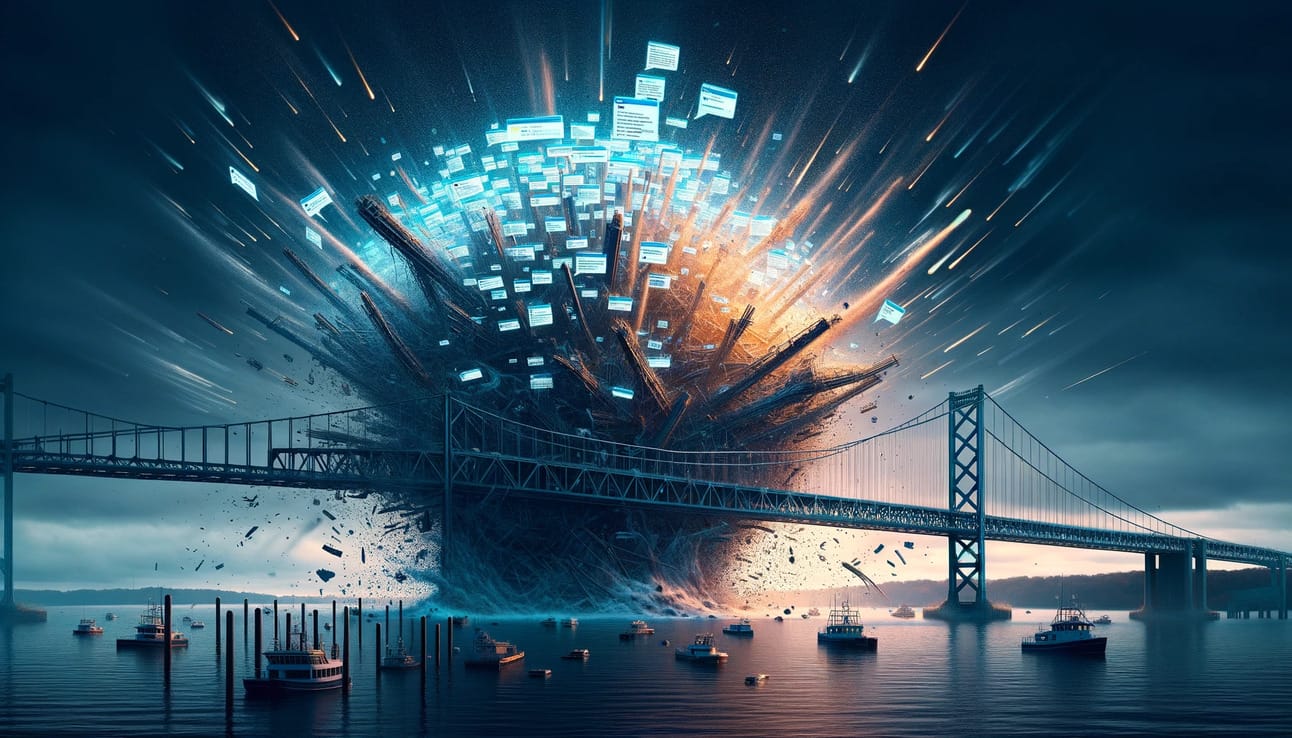CYBER SYRUP
Delivering the sweetest insights on cybersecurity.
MaxAI.me - Do more Faster with 1-Click AI
MaxAI.me lets you chat with GPT-4, Claude 3, Gemini 1.5. You can also perfect your writing anywhere, save 90% of your reading & watching time with AI summary, and reply 10x faster on email & social media.
Cyber Attack Rumors Spread In The Wake Of Disaster

In the early hours Tuesday morning, the city of Baltimore was shaken by a catastrophic event as a cargo ship collided with the Francis Scott Bridge, resulting in its collapse and the presumed loss of six lives. The Dali cargo ship, measuring 985 feet in length, careened into the Francis Scott Bridge after the vessel's operators issued a mayday call reporting a loss of power. Despite the warning, the ship hurtled toward the span at an alarming speed, striking one of the supports and causing a catastrophic failure of the structure. As a result, a significant portion of the bridge collapsed into the water below, leaving construction workers stationed on the bridge missing and presumed dead.
Prior inspections of the Dali cargo ship had raised concerns about its propulsion and auxiliary machinery, indicating potential deficiencies in gauges and thermometers. While the vessel underwent routine examinations, including one conducted by the U.S. Coast Guard in September, no deficiencies were identified. The collision, occurring at a speed of 8 knots, inflicted substantial force on the bridge support, leading to its collapse.
In the aftermath of the tragedy, conspiracy theories began to circulate, with some attributing the bridge collapse to deliberate sabotage rather than mechanical failure. Influencers and online platforms speculated about cyber-attacks and foreign interference, despite official assurances ruling out terrorism as a cause. Unsubstantiated claims linking the incident to geopolitical events, including the U.S.'s abstention in a UN Security Council vote, gained traction on social media platforms.
While rumors proliferated online, official statements from law enforcement agencies and maritime authorities emphasized the absence of evidence supporting the conspiracy theories. The managers of the Dali container ship reiterated that the cause of the collision had yet to be determined, emphasizing that none of the ship's crew were injured in the incident.
As Baltimore grapples with the aftermath of the bridge collapse, discussions have turned to lessons learned and potential improvements in infrastructure safety measures. Calls for enhanced monitoring systems and proactive measures to prevent similar incidents in the future underscore the urgency of addressing vulnerabilities in maritime transportation.
The collision of the Dali cargo ship with Baltimore's Francis Scott Bridge stands as a sobering reminder of the fragility of infrastructure and the potential consequences of maritime accidents. While investigations continue to unravel the sequence of events leading to the tragedy, the city mourns the loss of lives and navigates the complexities of recovery and rebuilding efforts in the wake of the disaster.
In todays world, with the velocity of information, it feels exceptionally hard to sift through all of the opinions and conspiracy to get to unbiased facts. The cause of the incident is still in question, and though many checks were made both on the ship and on the bridge, many times a passing score doesn’t always mean safe and secure. The same is true in todays ever-evolving landscape of cybersecurity. We cannot confirm, nor deny that a cyber attack was initiated on the ship in an effort to create this catastrophe, but the event does remind us of the fact that with so many industrial mechanisms running 24 / 7 a high level of protection is necessary in many un-suspecting sectors of the world.
Our hearts go out to all of the friends and family of everyone who was involved in this incident, and we hope that future inspections are more rigorous and detailed with regard to the ships themselves and our infrastructure around the world. With electronics controlling nearly every single aspect of our lives in one way or another, we commit ourselves to exploring a wide variety of threats and bringing them to you in an unbiased factual manner.
